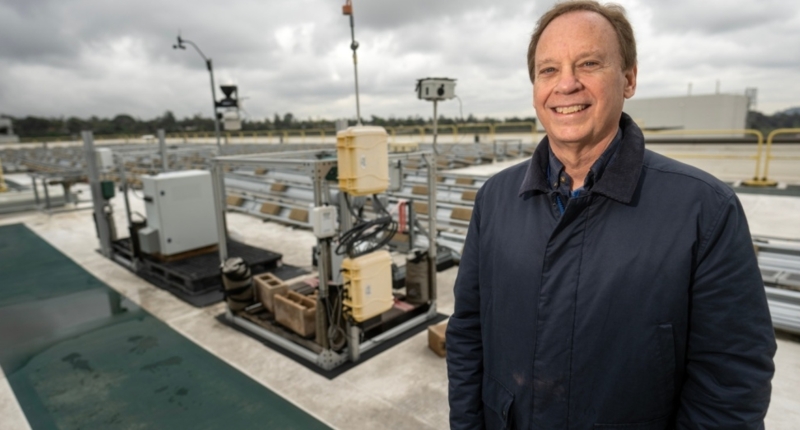NASA’s Jet Propulsion Laboratory has developed a new orbiting observatory that will be used to study air pollution. The Multi-Angle Imager for Aerosols (MAIA) will be sent into space, with the aim of uncovering the mysteries of particle pollution. This lesser understood, yet harmful component of smog is responsible for many health issues, including lung disease and heart attacks. By detecting the levels of sulfates, nitrates, and black carbon in particulate matter, the MAIA will allow scientists to determine which particles are most harmful to public health. Additionally, the MAIA will study the sources of pollution, including those stemming from wildfires and dust storms, and help trace them back to their origins. The instrument will be able to detect toxic metals, such as nickel, zinc, and barium, that can be found in PM. The MAIA is expected to operate for three years, with 11 cities being primarily targeted: Los Angeles, Atlanta, Boston, Rome, Addis Ababa, Ethiopia; Barcelona, Spain; Beijing; Johannesburg; New Delhi; Taipei, Taiwan; and Tel Aviv, Israel.
NASA’s Jet Propulsion Laboratory (JPL) is preparing to launch the Multi-Angle Imager for Aerosols (MAIA), a new space observatory designed to study air pollution. While most satellites are pointed towards other planets or galaxies, MAIA will be focused on Earth. Its mission is to uncover the mysteries of particle pollution, a harmful component of smog that is not well understood. By examining particulate matter (PM) from its perch 460 miles above the Earth’s surface, scientists hope to determine which components are more harmful than others and find ways to improve public health. David Diner, NASA’s principal investigator for MAIA, believes that the new tools provided by MAIA will help air quality regulators and public health researchers to better understand particle pollution’s health effects.
MAIA is a groundbreaking project that brings together many firsts. It is the first mission from Caltech for JPL and NASA with a goal of improving societal health. It is also the first time that public health researchers and epidemiologists have been brought in by the federal space agency to study incidents, rates, and causes of disease as part of a satellite mission.
MAIA will utilize its eagle-eye view to provide new data on particle pollution, a significant contributor to air pollution. By studying the most harmful components of PM, scientists hope to develop new methods to help public health by targeting the particles that are most harmful. According to Diner, MAIA will give researchers the tools to determine the components of PM that are the most harmful and to find ways to improve public health.
In conclusion, MAIA will be a crucial tool in the fight against air pollution, and it will be the first of its kind to focus on Earth’s air quality. It will provide valuable data on particle pollution, which is a significant component of air pollution, and will help scientists develop new methods to improve public health by targeting the most harmful particles.
The Multi-Angle Imager for Aerosols (MAIA) team at JPL is collaborating with several organizations, including the U.S. State Department, the U.S. Environmental Protection Agency, epidemiologists at UCLA and UC Davis, and NASA’s Atmospheric Science Data Center in Virginia. MAIA is not the first NASA instrument focused on Earth, but it is an upgrade from the Multi-angle Imaging SpectroRadiometer (MISR) that has been providing climate and pollution data since 1999. MAIA has only one camera, but it is programmable and can be directed from Earth, a first for a NASA Earth-observing instrument.
MAIA’s 14 spectral bands can capture digital images of tiny aerosol particles, including particulate matter (PM), which is a significant component of air pollution. PM includes particles with a diameter of 10 microns or more (PM10) and particles with a diameter of 2.5 microns or less (PM2.5). While both types of particles are associated with harmful health effects, PM2.5 may be more dangerous because it can bypass the body’s defenses and enter the bloodstream.
Air pollution is the most significant environmental health risk worldwide, according to Diner. Studies have linked PM exposure to various health problems, including lung disease, heart attacks, and strokes. Chronic exposure to PM can also have a direct effect on cognitive decline, including dementia. PM comes from various sources, such as smokestacks, tailpipes, wildfires, and dry, dusty lands, but experts do not yet know the specific ingredients or concentration levels in this toxic mix.
MAIA can identify the ingredients in PM, such as sulfates, nitrates, and black carbon, that are not visible to other instruments. The ability to distinguish these particles’ concentrations and composition is the primary motivation for MAIA’s development. By targeting the most harmful particles, MAIA could provide valuable data for public health researchers and regulators to improve air quality and protect public health.
The Multi-Angle Imager for Aerosols (MAIA) satellite, developed by scientists at NASA’s Jet Propulsion Laboratory (JPL), is a groundbreaking instrument designed to track particle pollution in the air. The MAIA team will use the data to trace pollutants back to their sources, much like detectives solving a crime. By identifying the specific ingredients in particle pollution, including sulfates, nitrates, and nitrogen oxides, scientists can develop targeted regulations to reduce emissions from sources such as diesel exhaust and fossil fuel combustion.
MAIA’s ability to distinguish between different types of particles, including toxic metals such as nickel, zinc, and barium, is a significant advancement in air pollution research. Some of these particles come from vehicle brakes and tires, which is an emerging issue in air pollution in cities. Because air pollution experts currently do not know the specific ingredients or concentration levels in particle pollution, MAIA’s ability to identify these particles’ composition and concentration levels is critical to public health researchers and regulators’ efforts to improve air quality.
JPL is partnering with the Italian space agency, Agenzia Spaziale Italiana (ASI), to launch MAIA on the satellite known as PLATiNO-2, which will orbit the Earth. The MAIA will operate for three years and primarily target 11 cities worldwide, including Los Angeles, Atlanta, Boston, Rome, Addis Ababa, Barcelona, Beijing, Johannesburg, New Delhi, Taipei, and Tel Aviv.
MAIA’s data will help developing countries like Pakistan, where air quality is one of the worst in the world, but the ground sensors to study air pollution are not available. The satellite data will help build up their anti-pollution efforts. The MAIA team is also working with various organizations, including the U.S. State Department, the U.S. Environmental Protection Agency, epidemiologists at UCLA and UC Davis, and NASA’s Atmospheric Science Data Center in Virginia, to analyze and interpret the data.
In conclusion, the MAIA instrument developed by the JPL team is a significant step forward in air pollution research. The ability to distinguish the specific ingredients and concentration levels in particle pollution will provide valuable data to public health researchers and regulators to improve air quality and protect public health. The launch of MAIA in partnership with ASI will provide global coverage, including developing nations where air pollution is a significant problem.
MAIA will not only provide detailed information about particle pollution, but it can also help identify the sources of pollutants and provide important data to create policies that can improve air quality. It will target 11 cities and countries, including Los Angeles, Atlanta, Boston, Rome, Addis Ababa, Ethiopia; Barcelona, Spain; Beijing; Johannesburg; New Delhi; Taipei, Taiwan; Tel Aviv, Israel, and Pakistan. MAIA is also the first mission from Caltech for JPL and NASA with the aim of improving societal health. Additionally, MAIA will study air pollution sources that are becoming more frequent due to climate change, such as wildfires and dust storms. The three-year mission will launch at the end of 2024, and it will help provide benefits to humanity for years to come. The MAIA team is also working with the U.S. State Department, the U.S. Environmental Protection Agency, epidemiologists at UCLA and UC Davis, and NASA’s Atmospheric Science Data Center in Hampton, Virginia.
Don’t miss interesting posts on Famousbio










